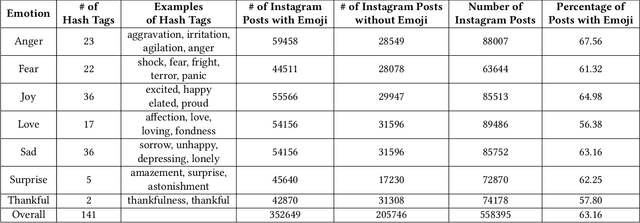Multimodal Emotion Classification
Paper and Code
Mar 13, 2019



Most NLP and Computer Vision tasks are limited to scarcity of labelled data. In social media emotion classification and other related tasks, hashtags have been used as indicators to label data. With the rapid increase in emoji usage of social media, emojis are used as an additional feature for major social NLP tasks. However, this is less explored in case of multimedia posts on social media where posts are composed of both image and text. At the same time, w.e have seen a surge in the interest to incorporate domain knowledge to improve machine understanding of text. In this paper, we investigate whether domain knowledge for emoji can improve the accuracy of emotion classification task. We exploit the importance of different modalities from social media post for emotion classification task using state-of-the-art deep learning architectures. Our experiments demonstrate that the three modalities (text, emoji and images) encode different information to express emotion and therefore can complement each other. Our results also demonstrate that emoji sense depends on the textual context, and emoji combined with text encodes better information than considered separately. The highest accuracy of 71.98\% is achieved with a training data of 550k posts.
 Add to Chrome
Add to Chrome Add to Firefox
Add to Firefox Add to Edge
Add to Edge